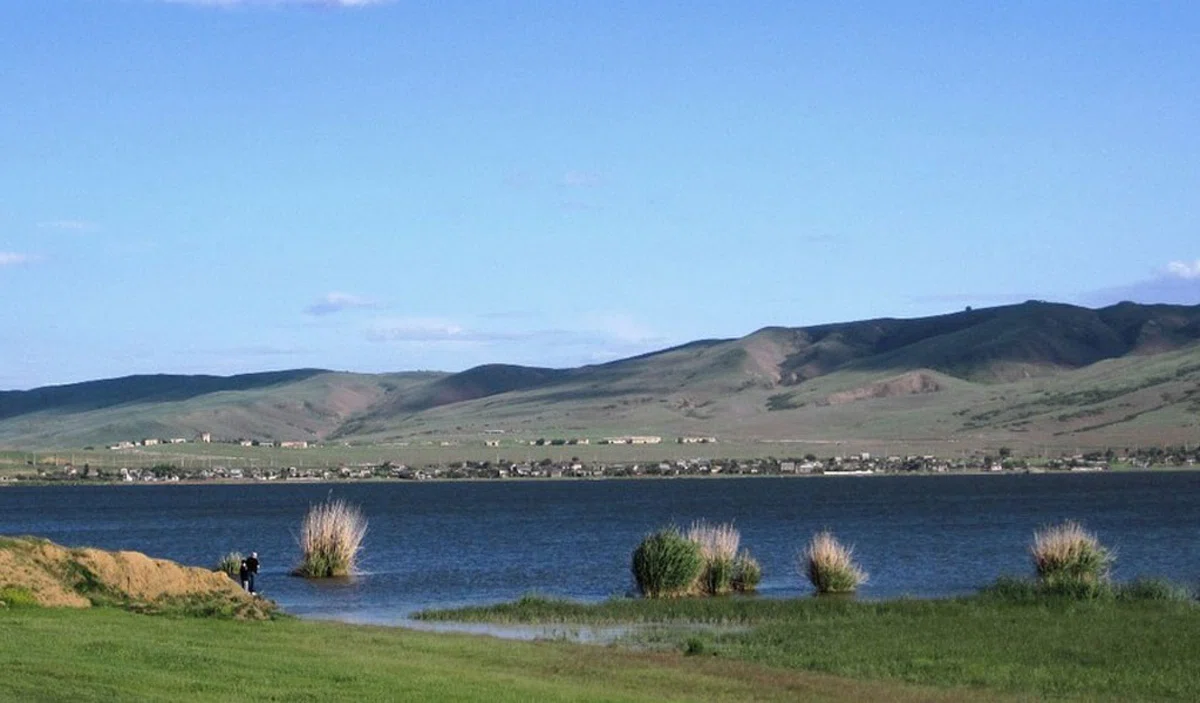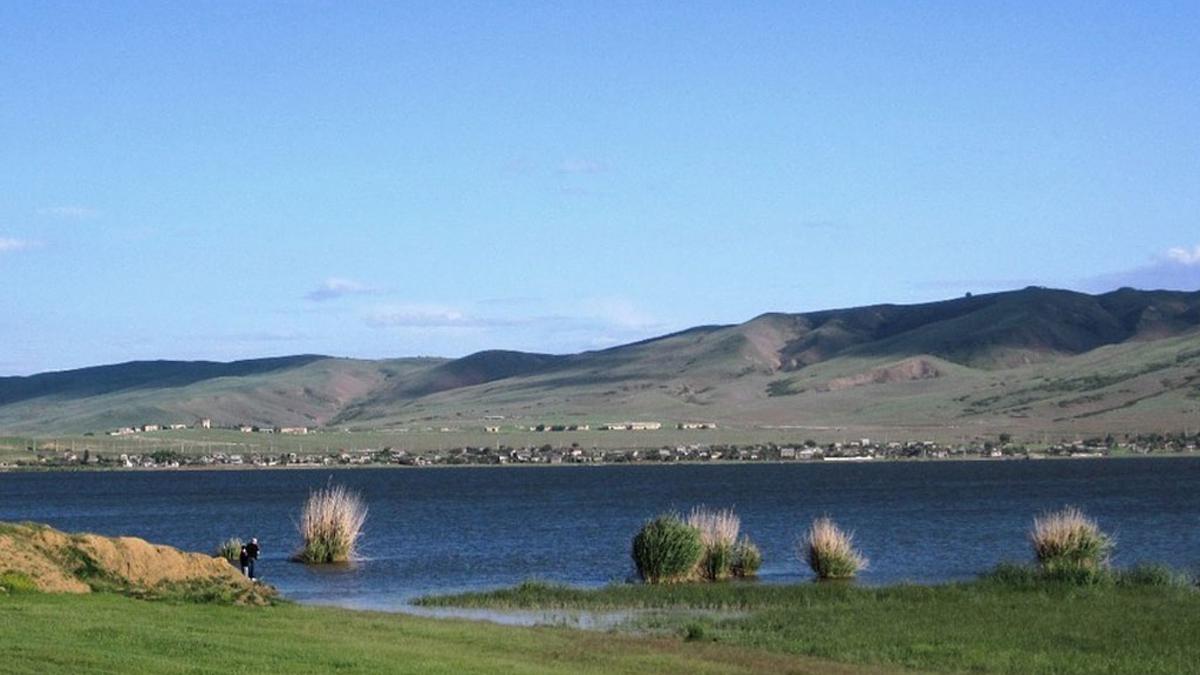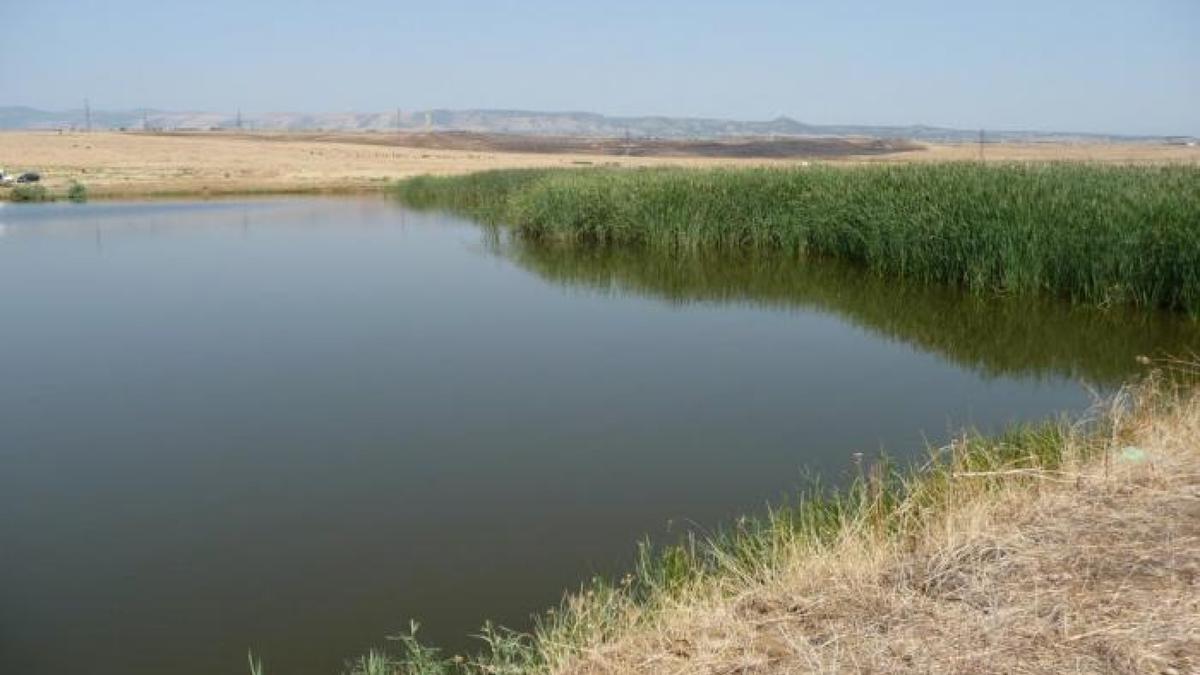
Therapeutic mud in Georgia. The climatic resort of Kumisi.
Kumisi resort is famous for its mud, which is used for medicinal purposes. Mud for the resort is extracted by lakes, art created. The bottom of the lake is covered with mud after volcanic origin. It is noteworthy that these mud are also actively used at the balneological resort in Tbilisi.
The municipality of Gardabani is located in the southern part of the country near the border with Azerbaijan. The territory of the municipality begins between the Kojori - Sakaraulo, Mtatsminda, Tabori, Teleti ranges and gradually turns into a plain to the south.
The largest river of Georgia and Transcaucasia, the Kura, flows through most of the municipality's borders. On the bank of the river between the Teleti ridge and the Jagludzha hill, in the Kumisi hollow, there is the village of Kumisi - a peloid-climatic resort of the high-altitude zone. Kumisi is known for its therapeutic mud. Mud is extracted from an artificial lake located in the southeastern part of the village.

KUMISI RESORT
Until the middle of the last century, there was a small (0.48 km2) salt lake of pseudo-karst origin on the site of Lake Kumisi, the water of which contained Glauber salt.
In the 1960s, the lake was filled with water from the Kura River. The water level rose, and the lake became fresh.
Today, the area of the Kumisi Lake basin is 97 km2, with a surface area of approximately 5 km2. The lake is 3 km long and 1 km wide. The depth of the lake is from 4 to 6 meters, depending on changes in the water level.
The coastal zone is covered with sedge and reeds. Waterfowl take shelter in these plants.
The bottom of this lake is covered with mud of pseudo-volcanic origin, having high therapeutic indicators.
The thickness of the silt reaches several tens of centimeters. These mud are actively used at the Tbilisi balneological resort.
Location: between the Jagludzhi upland and the Tsalaskuri Plain, southeast of Lake Kumisi.
Distance: from Tbilisi - 20 km. Altitude above sea level: 480 m.
Terrain: hilly plain.
Climate: mild, continental, dry. Winter is mild, with little snow. The average temperature in January is 0 ° C. Summer is hot and dry. The average temperature in August is 24 °C. The amount of annual precipitation is 550 mm.
Average relative humidity per year: 68%.
Duration of sunshine per year: 2200 hours.
Natural healing factors: the climate of low mountains, sulfide silt mud of Lake Kumisi, containing silica, aluminum, iron oxide and other biologically active substances. Also, the waters of Lake Kumisi are chloride-sulfate, magnesium-calcium-sodium mineral waters with a total mineralization of 15-25 g/m2.
Types of treatment: baths and applications of therapeutic mud, passive climatotherapy.
Therapeutic indicators: diseases of the cardiovascular, osteoarticular system, gynecological diseases, chronic pyelonephritis and nephritis, cystitis, chronic gastritis, colitis and enterocolitis, chronic hepatitis, as well as diseases of the nervous system: sciatica, sciatica and encephalitis.

Kumisi resort is one of the most interesting places to visit in Georgia. It is located in the southern part of the country, near the border with Azerbaijan. The resort is famous for its mud, which is used for medicinal purposes. The mud for the resort is extracted from an artificial lake located in the southeastern part of the village of Kumisi. The bottom of the lake is covered with mud deposits, which were formed after a volcanic eruption. These muds are also actively used in the Tbilisi balneological resort.
The area where the resort is located is unique for its natural diversity. The territory of Gardabani municipality begins between the Kojori - Sakaraulo, Mtatsminda, Tabori and Teleti ridges and gradually turns into a plain to the south. Georgia's and Transcaucasia's largest river, the Kura, flows across much of the municipality's border. On the bank of the river between Teleti range and Yagluja hills, in the hollow of Kumisi is Kumisi village - a peloid-climatic resort of the high altitude belt. The resort offers not only mud treatment, but also many other types of outdoor activities. Guests can enjoy swimming in the sea, water sports, hiking along the coast and mountains, and visiting nearby attractions such as ancient temples and fortresses. The lake, located in the southeastern part of the village, is one of Georgia's most attractive natural attractions. The lake was originally the site of a small salt lake of pseudo-karst origin whose water contained glauber salt. However, in the 1960s, the lake was filled with water from the Kura River, and its level rose, making it freshwater. Today, the lake has a basin area of 97 km² and a surface area of about 5 km². The lake is 3 km long and 1 km wide. The depth of the lake varies from 4 to 6 meters, depending on the water level. On the coastal area grow sedges and reeds, which serve as a refuge for many waterfowl. One of the most interesting aspects of Lake Kumishi is the mud of pseudo-volcanic origin that covers its bottom. This mud is several tens of centimeters thick and has high therapeutic properties. That is why the mud is actively used at the Tbilisi balneological resort. Among the diseases that can be successfully treated at the resort are diseases of the cardiovascular, bone and joint system, gynecological diseases, chronic pyelonephritis and nephritis, cystitis, chronic gastritis, colitis and enterocolitis, chronic hepatitis.
The resort has a mild continental climate, which is conducive to the treatment of a number of diseases. Winters are mild and summers are hot and dry, and the average temperature in August reaches 24ºC. The average relative humidity is 68% and the duration of sunshine per year reaches 2200 hours. In addition, the lake waters are chloride-sulfate, magnesium-calcium-sodium mineral waters with a total mineralization of 15-25 g/m².
If you have any questions about the resort or would like to share your experience, feel free to leave comments below the article. Our experts will be happy to answer your questions and help make your trip to the resort as pleasant and rewarding as possible.












40 comments
Log in to leave a comment
Курорт предлагает не только лечение, но и возможность насладиться красотой природы и близлежащих достопримечательностей, что делает его идеальным местом для полноценного отдыха и оздоровления. Хотелось бы посеить!
даётся грязевыми ваннами. Раньше на месте озера Кумиси было маленькое озерцо
С содержанием глауберовой соли. Его в основном применяют для производства соды, и стекла. После его наполнили водой из реки Куры. Теперь она стала пресной водой.
Дно озера покрыто грязью вулканического происхождения. Эти грязи и применяют
в курорте для лечения в виде ванн, обвертывания и другое.
В этом курорте кроме сердечных заболеваний ещё и лечат гинекологические, заболевания мочеполовой системы,
суставные ишиас, и радикулит и другие.
Из статьи узнала что это местность находится на границе с Азербайджаном.
Излечиваются заболевания сердечно-сосудистой, костно-суставной системы, гинекологические заболевания, пиелонефрит и нефрит, цистит, гастрит, колит и энтероколит, гепатит, радикулит, ишиас, энцефалит и нервы.
С середины 19 века на месте озера Кумиси находилась небольшое солёное озеро псевдокарстового происхождения, содержащее глауберову соль.
В 1960-ых годах озеро заполнили водой из реки Куры, уровень воды поднялся и озеро стало пресным.
Прибрежная зона покрыта осокой и камышом, где укрываются водоплавающие птицы.
Дно этого озера покрыто грязями псевдовулканического происхождения, с лечебным эффектом. Толщина ила достигает несколько десятков сантиметров.
толстолобик, зеркальный сазан. А вот купаться здесь не рекомендуется.